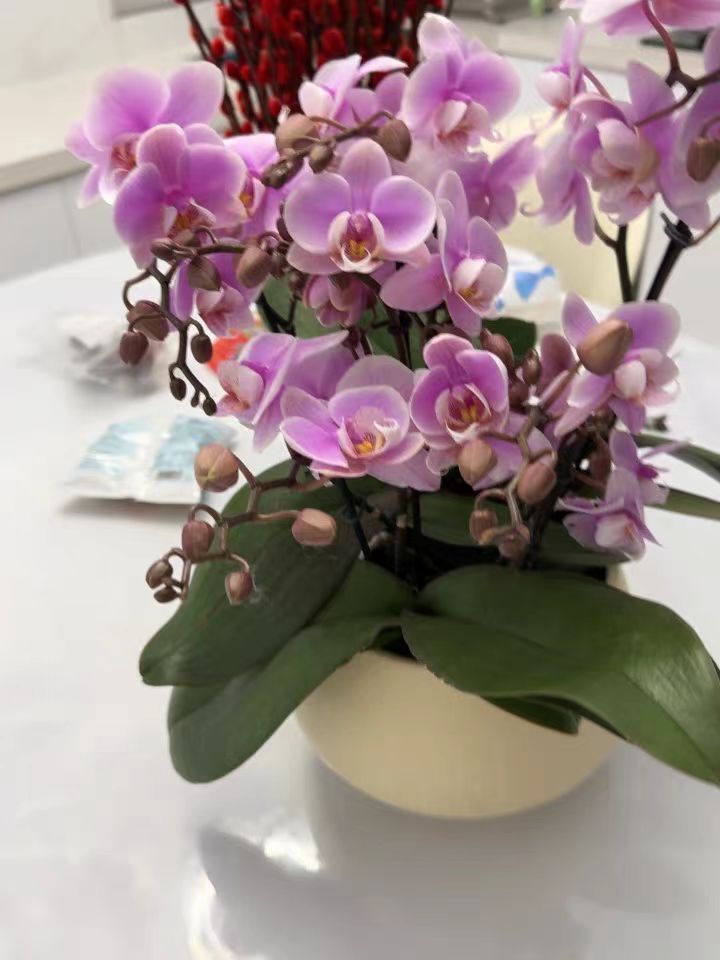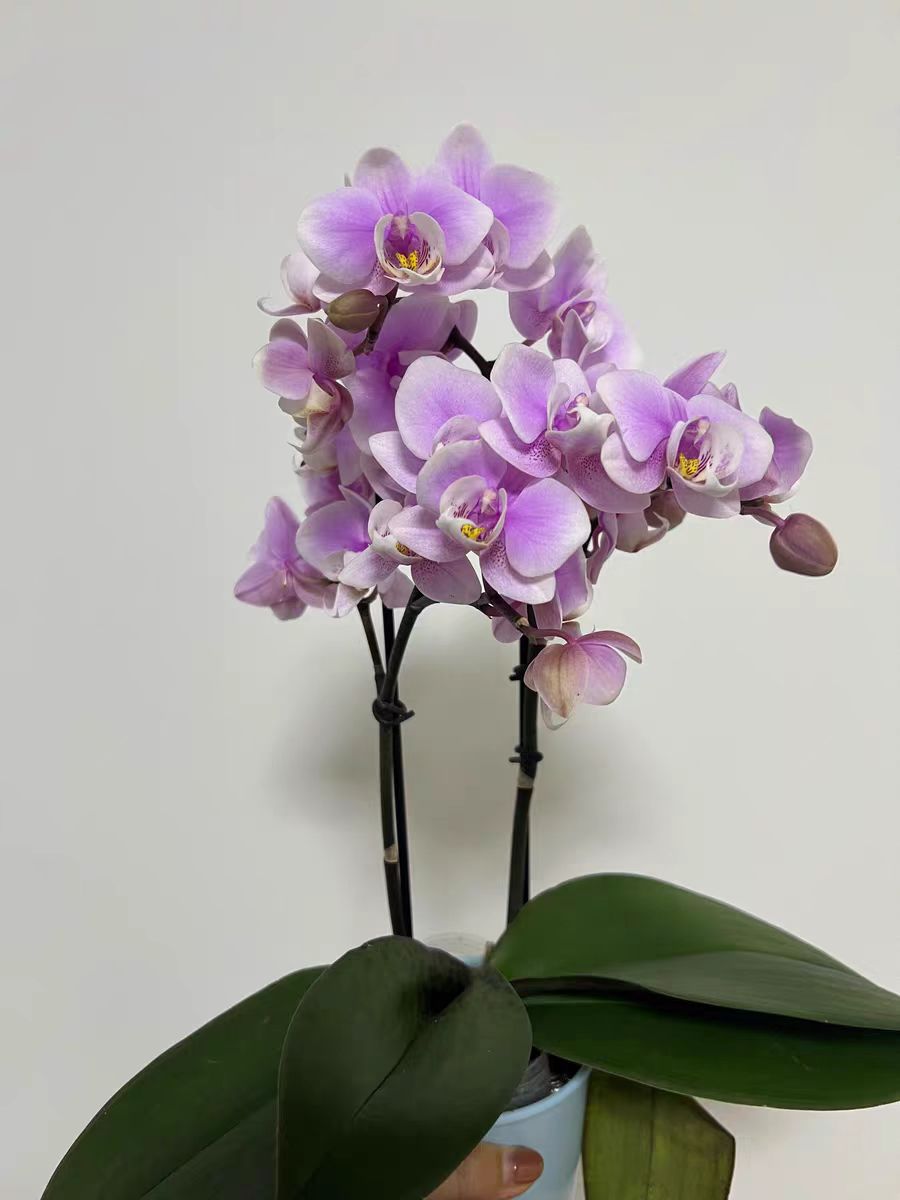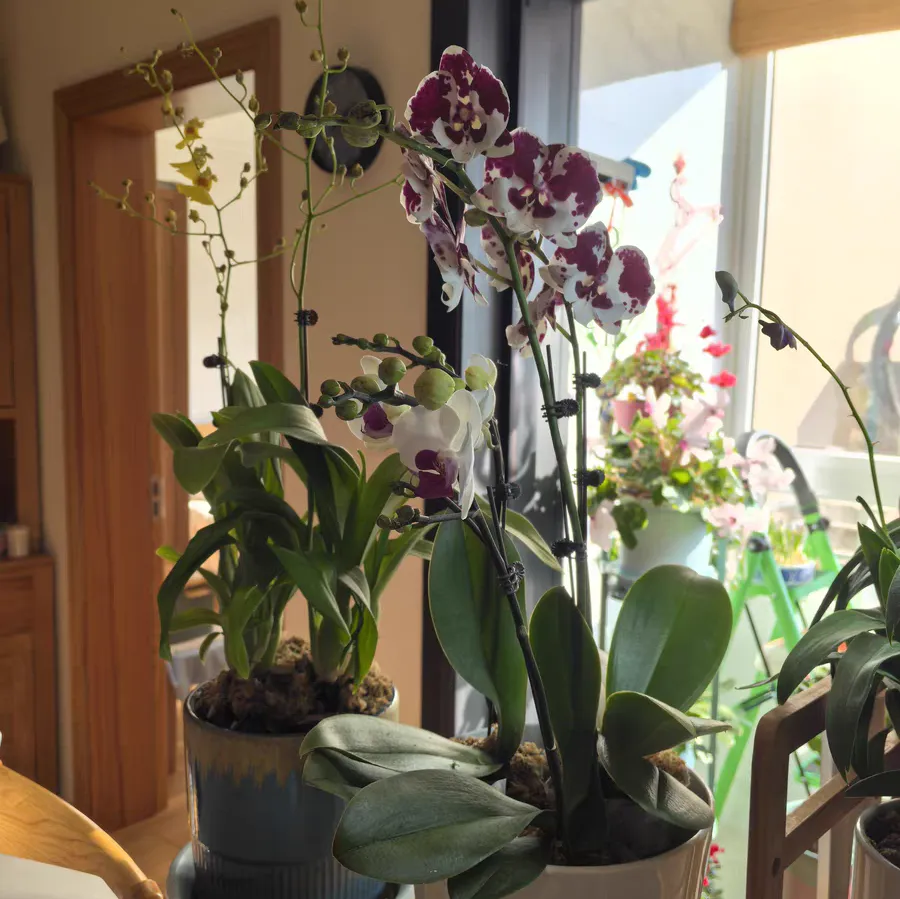Phalaenopsis, a tropical plant, has high requirements for its growth environment. It is neither cold - tolerant nor heat - tolerant and has special demands for conditions such as light and humidity. Therefore, there are significant differences between cultivating Phalaenopsis indoors and outdoors.
The suitable growth temperature for Phalaenopsis ranges from 18 to 28 degrees Celsius, and it should not be lower than 15 degrees Celsius in winter. Indoors, we can easily achieve this temperature range through devices such as air conditioners and heaters, providing a stable growth environment for Phalaenopsis. In contrast, the temperature in the outdoor environment fluctuates greatly. It may be too hot in summer and too cold in winter, which is extremely unfavorable to the growth of Phalaenopsis. Therefore, from the perspective of temperature control, indoor cultivation has more advantages.
Phalaenopsis prefers bright, diffused light. It needs a certain amount of light for photosynthesis but cannot be exposed to strong sunlight for a long time. Indoors, we can easily adjust the intensity and duration of light by adjusting curtains, blinds, etc., to meet the growth needs of Phalaenopsis. Outdoors, especially in summer, the sunlight is intense. Without proper shading measures, Phalaenopsis is likely to be damaged. Therefore, in terms of light management, indoor cultivation is also more flexible.
Phalaenopsis likes an environment with high humidity, and the change in air humidity should not be too large. Indoors, we can maintain a high air humidity through methods such as spraying and using a humidifier, creating an ideal growth environment for Phalaenopsis. Outdoors, the humidity is affected by various factors such as weather and seasons and is difficult to remain stable. Therefore, from the perspective of humidity adjustment, indoor cultivation is also more conducive to the growth of Phalaenopsis.
Although Phalaenopsis requires a well - ventilated environment, it does not mean it can be directly exposed to wind and rain outdoors. Ventilation indoors can be achieved by opening windows and using air purifiers, and it can also avoid the possible pollution and pest infestations in the outdoor environment. In contrast, although the outdoor ventilation is natural, it may also bring adverse factors such as strong winds and heavy rains, which pose a threat to the growth of Phalaenopsis.
From the perspective of management difficulty, indoor cultivation of Phalaenopsis is relatively simpler. Because we can more easily control conditions such as temperature, light, and humidity, providing a stable and suitable growth environment for Phalaenopsis. When cultivating outdoors, we need to constantly pay attention to weather changes and take corresponding measures to protect Phalaenopsis from adverse factors. This undoubtedly increases the management difficulty and cost.
There are significant differences between indoor and outdoor cultivation of Phalaenopsis. In terms of temperature control, light management, humidity adjustment, ventilation conditions, and management difficulty, indoor cultivation has more advantages. Of course, if a stable and suitable growth environment can be provided for Phalaenopsis outdoors and one has sufficient management experience and skills, outdoor cultivation is also possible. But generally speaking, for most flower lovers, indoor cultivation of Phalaenopsis is a more sensible choice.
Is the cultivation of Phalaenopsis indoors the same as outdoors?

Share with
Tagged in :




Leave a Reply